Early Learning Design
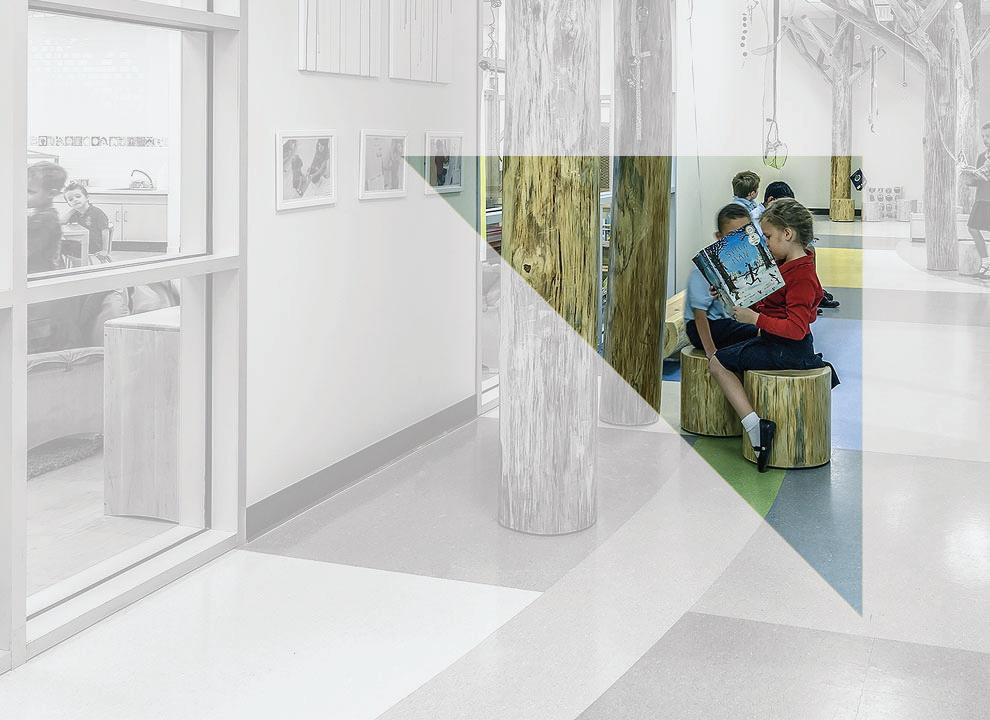
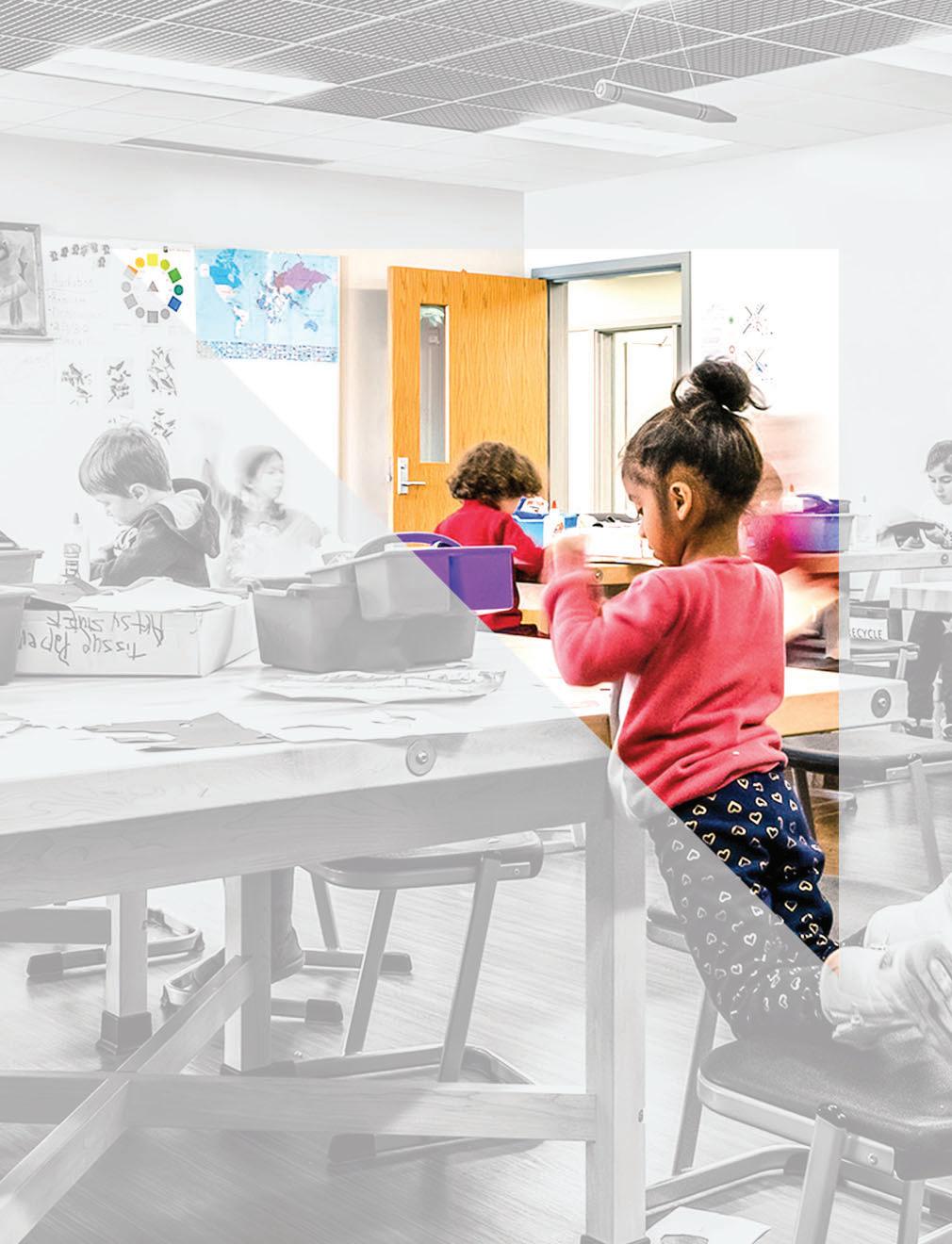



Fanning Howey is an integrated architecture, interiors, and engineering firm specializing in learning environments. We use the power of design to create smarter, happier learners, more successful educators and stronger communities.
From our offices in Indiana Ohio and Michigan, we have designed K-12 learning environments throughout the Midwest and across the country.
Our team is devoted to finding ways to conceive and build inspirational places for teaching and learning.
WE ARE LEADERS IN:
• Architecture
• MEP Engineering
• Interior Design
• Landscape Architecture
• Technology Design
• Construction Administration
• Master Planning
• Educational Visioning
• Bond Issue/Referendum Assistance
900K+
students attend Fanning Howeydesigned schools each day
3,850+
K-12 school designs in 36 states and Washington, DC since 1961
21
Impact on Learning Awards for school communities (more than any other firm)
120+
professionals focused on improving learning environments
#4
globally in LEED certification design for K-12 schools
64
years of expertise creating impactful spaces
Zionsville, IN

The new Zionsville Early Learning Center will give students, teachers, and the community a purpose-built space designed to elevate early childhood education.
By centralizing programs previously scattered across the district, the facility creates consistent, student-centered experiences for children ages 4 and 5. Every classroom has direct access to nature and outdoor learning spaces, while decentralized dining and community-focused suites foster a nurturing environment.
Designed to achieve Net-Zero energy, the building features geothermal heating and cooling, a solar array, and an all-electric kitchen. Its simple, durable systems reduce maintenance demands and lower operational costs. Contemporary materials and mass timber entry canopies reflect the district's forward-thinking vision while blending into the surrounding school community.
CLIENT Zionsville Community Schools
SCOPE
150,000 New SF
COST $65 M
COMPLETION DATE 2027
CONTACT
Matthew Doublestein Director of Operations 317.873.2858 mdoublestein@zcs.k12.in.us
ABOVE | Mass timber canopies create a natural, welcoming feel at student drop off areas.
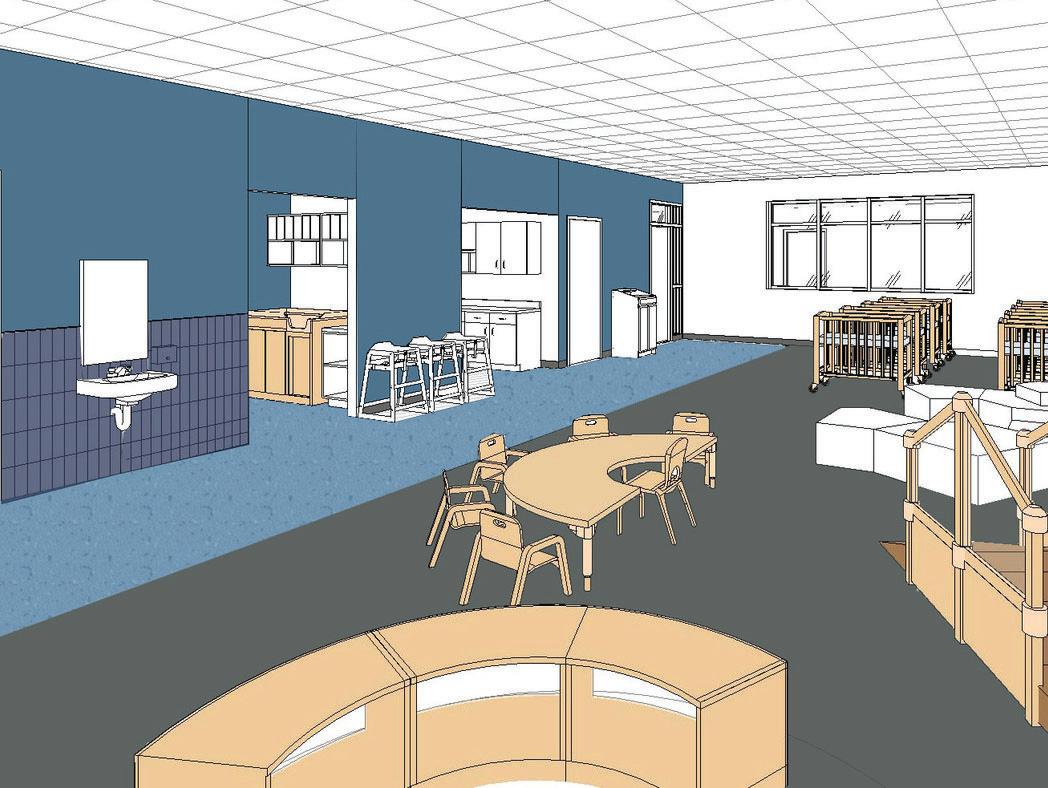
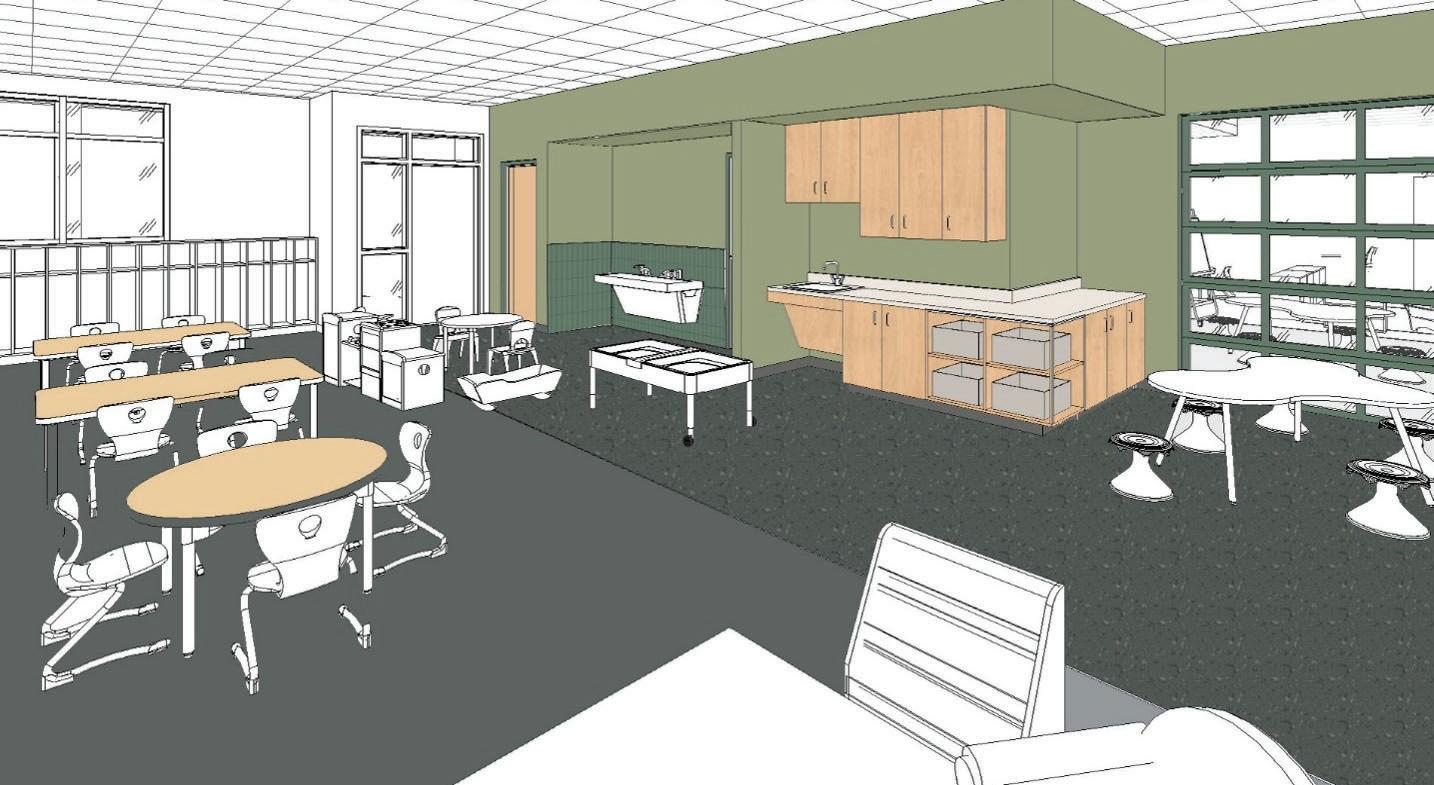
Indianapolis, IN

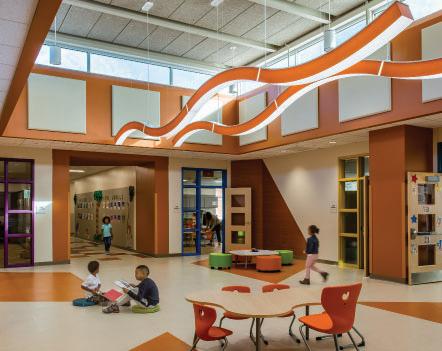


The new Nathaniel Jones Early Childhood Center gives young students an environment designed around their specific cognitive and developmental needs.
The design creates two small learning communities with a variety of spaces to engage in sensory learning. Students explore nature in a large outdoor play area and connect with each other in a central atrium at the heart of each learning community. Wall graphics featuring a variety of zoo animals provide for a fun environment while helping to identify locations within the building.
Partner firm: Meticulous Design
CLIENT Pike Township, MSD of SCOPE
35,000 New SF
COST
$8.6 M
COMPLETION DATE 2019
CONTACT
Clayton Gruber Director of Facilities & Security
317.280.2425
CGruber@pike.k12.in.us
Morrow, OH
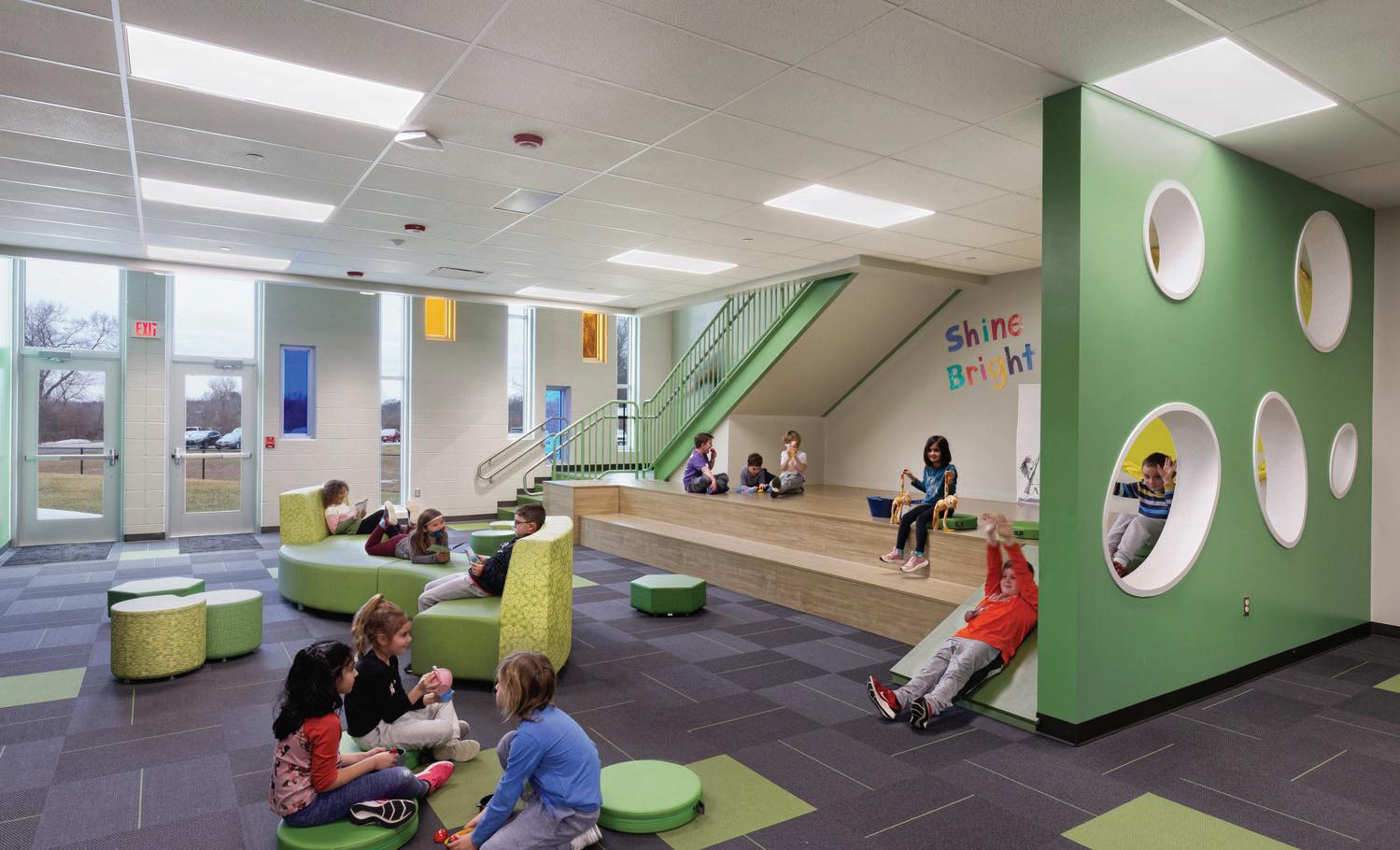
The New Early Elementary School has been designed to support Little Miami's youngest learners as part of the District's Master Plan.
The programming and vision of the district curriculum led to a building designed with academic pods to support the children. Each pod is organized with 6 classrooms, a small group room, and ample common flex studio to be shared by the entire pod. This allows for different classrooms to come together to work on common projects or lessons.
The flex studios have been designed to be interactive for the children. The intent of the flex studios is to give the children different learning environments throughout the building.
Partner Firm: emersion DESIGN
ABOVE | Little Miami Early Childhood Center, Morrow, Ohio, Emersion Design
CLIENT Little Miami Local School District
SCOPE 102,000 New SF
COST $23.1 M
COMPLETION DATE 2021
CONTACT
Regina Morgan Superintendent 513.899.2264 rmorgan@lmsdoh.org


Hilliard, OH

Fanning Howey helped the Hilliard City School District with master planning for their preschool students.
To help accommodate growth in the District, they decided to add eight preschool classrooms, each including a restroom, to this existing elementary school. Materials and systems were matched to maintain similar appearance and function. Another seven classrooms are planned for future expansion.
CLIENT Hilliard City School District
SCOPE 10,436 New SF
COST $2.2 M
COMPLETION DATE 2022
CONTACT
Mike McDonough
Assistant Superintendent of Operations 614.921.7000
Mike_McDonough@hboe.org
ABOVE | This well-lit pre-school educational space features large wooden shelving units for storage

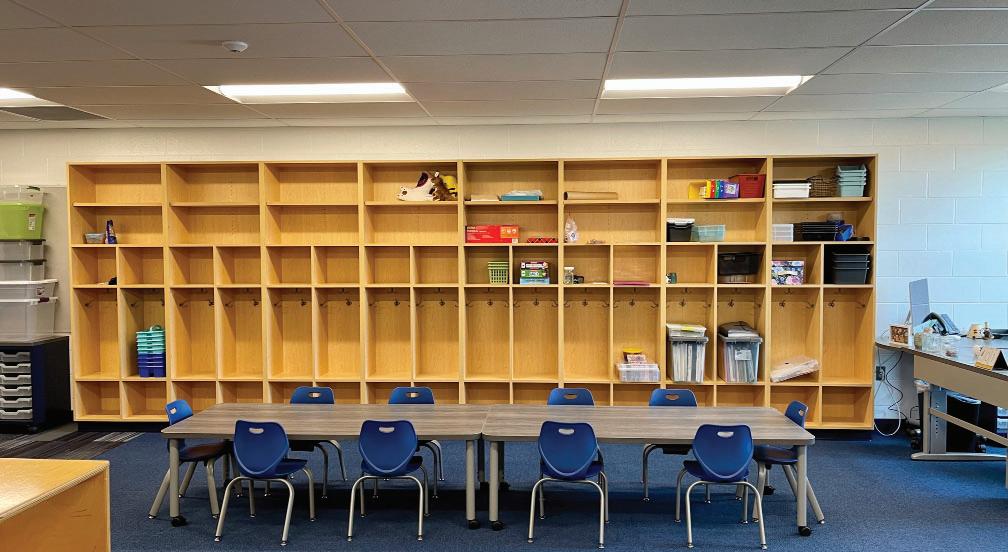

Smart design solutions transformed a decommissioned neighborhood school to meet the needs of the YMCA of Muncie and Ball State University.
The Mitchell Early Childhood and Family Center is the result of community focused design and planning. Bringing together the Ball State Child Study Center and the YMCA of Muncie's Apple Tree Child Development Center programs, this renovated facility includes large care spaces, age-appropriate outdoor play areas, a multi-use atelier for extra-curricular events and activities and classroom space for University students studying child development.
The previously vacant Mitchell Elementary School was renovated to house the newly merged programs while meeting the complex needs of an early learning environment, working daycare, and academic research facility. The atelier provides a place for child development activities and for observation of child interaction by Ball State students and faculty.
CLIENT Ball State University
SCOPE
28,211 Renovated SF
COST
$870.5 K
COMPLETION DATE 2019
CONTACT
Greg Graham
Director of Facilities Planning
765.285.2828 ggraham@bsu.edu
Lima, OH

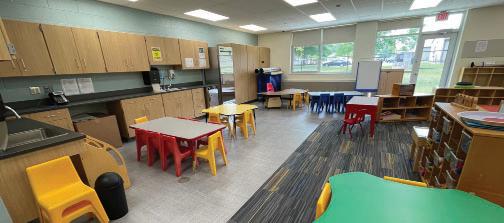
New facility providing early childhood services to students ages 3-5 from low-income families in the Lima, Ohio, area.
This facility includes four spacious 1,000 SF classrooms, two 650 SF classrooms for toddlers, a 1,600 SF indoor play area, and an outdoor playground, as well as an office and conference/workroom for the teachers.
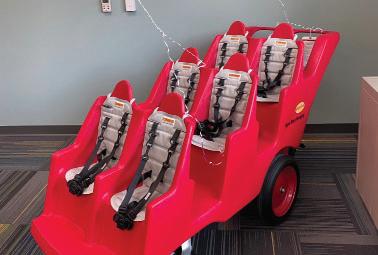
CLIENT West Ohio Community Action Partnership (WOCAP)
SCOPE 11,600 New SF
COST
$2.4 M
COMPLETION DATE 2021

Renovations to an acquired 12,000-square-foot space will create new opportunities early childhood education.
Fanning Howey's smarter design solutions will convert an existing office environment into a flexible space for the British School's two-year-old program. Our integrated design approach will create six classrooms, a reception area, restrooms, flexible spaces, a multi-purpose room and a break room for school staff
The design was developed in collaboration with Nord Anglia's international facilities team, as well as with stakeholder groups from the British International School of Chicago.
CLIENT Nord Anglia Education Limited
SCOPE
12,000 Renovated SF
COST
$ 500 K
COMPLETION DATE 2020
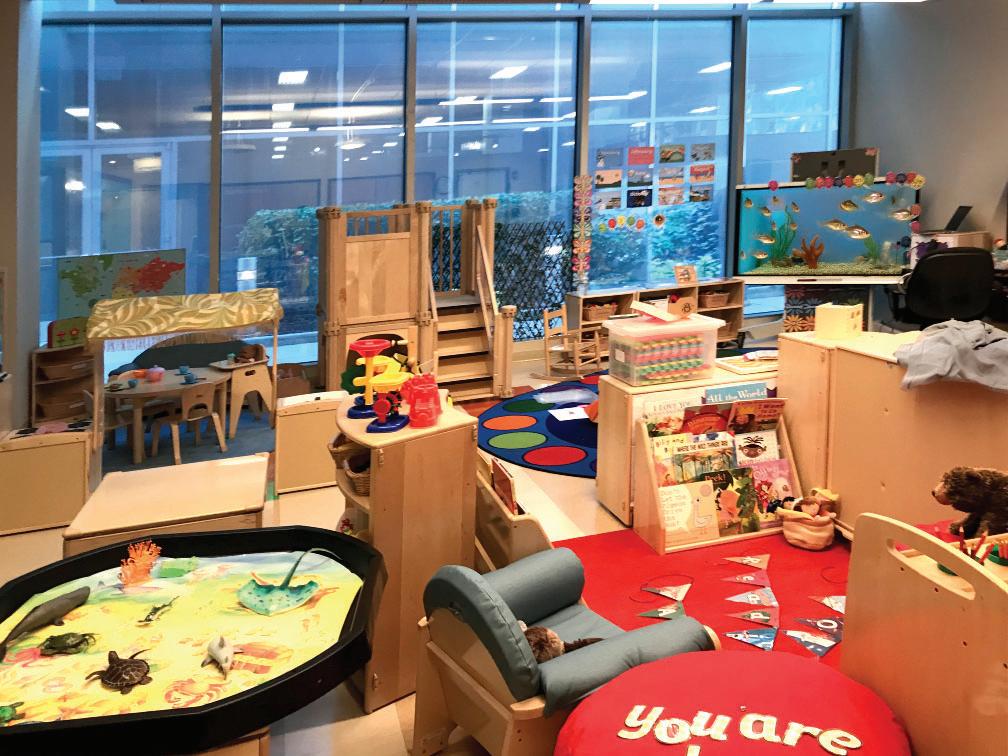
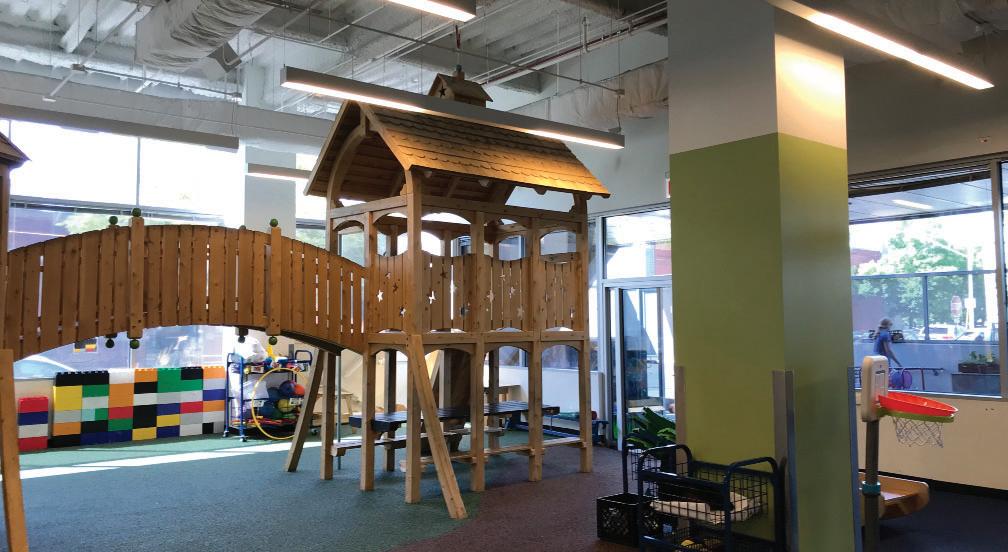
Katy, TX

Part of a larger PK-12 campus, the British International School of Houston early years environment is specifically designed to enable students to explore, experiment, discover, take risks and apply their learning in different contexts.
Spaces are designed to allow students to make personal choices, realize their personal interests and experience the outcomes of their decisions. Specially-designed learning areas include: Reading and Library area, Mathematics area, Physical development area and a Creative area. The early years center also provides early child with access to outdoor experiences. The outdoors environment includes special areas such as Digging, Music, Numbers and Letters, Role Play, Balls, Bikes, Skipping Ropes and a Collaborative Area where children work together to create and solve problems.
Designed as Fanning Howey + House Partners, a joint venture.
CLIENT Nord Anglia Education Limited
SCOPE
280,000 New SF
COST
$58 M
COMPLETION DATE 2016
CONTACT
John McCall
Director of Operations - The Americas 407.340.9796
John.McCall@nordanglia.com
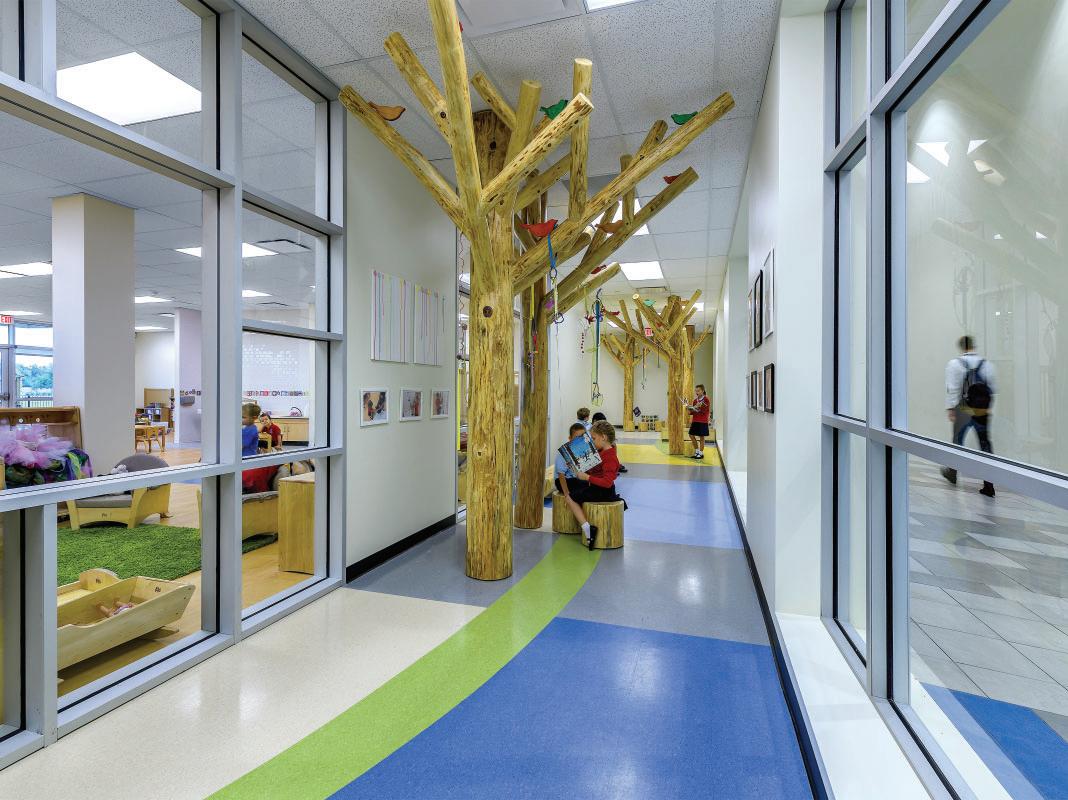

New Haven, MI

The adaptive reuse of a 1920s middle school building created a dynamic learning environment for New Haven's early childhood students.
The design takes advantage of existing high-bay spaces and larger structural bays to create a state-of-the-art early childhood facility. Large classrooms with multi-activity zones, wet and dry areas, and play and messy areas support the early childhood pedagogy.
A gracious new canopy entry and walkway serves as a symbol of the changes that have taken place inside the building. Redesigned parking and drop-off areas support barrier-free ADA access and safe child pickup and drop-off zones – important features for this new child-friendly school.
CLIENT
New Haven Community Schools
SCOPE
4,000 Renovated SF
COST
$2.1 M
COMPLETION DATE
2008
ABOVE | In the classrooms, furnishings and casework are scaled to meet the ergonomic needs of young children.



The new Abraham Lincoln Elementary School is designed to provide a first-rate education for the district's youngest students.
The new building is comprised of two academic wings: one for prekindergarten and kindergarten students and one for first grade students. Appropriately-scaled spaces and lively interior design elements create a student-centered learning environment.
Abraham Lincoln is located on the same campus as the district's new John F. Kennedy and Barack Obama Elementary Schools. The three schools share staff and event parking and play fields, while maintaining their own circulation patterns for student drop-off. This shared-site concept allowed the district to reduce site acquisition costs, as well as long-term operating costs.
CLIENT Maple Heights City Schools
SCOPE
62,795 New SF
COST
$8.7 M
COMPLETION DATE 2011
CONTACT
Bruce Willingham
Assistant Superintendent 216.587.6100
ABOVE | A single-story entry is scaled to provide a welcoming experience for young students.
ABOVE |
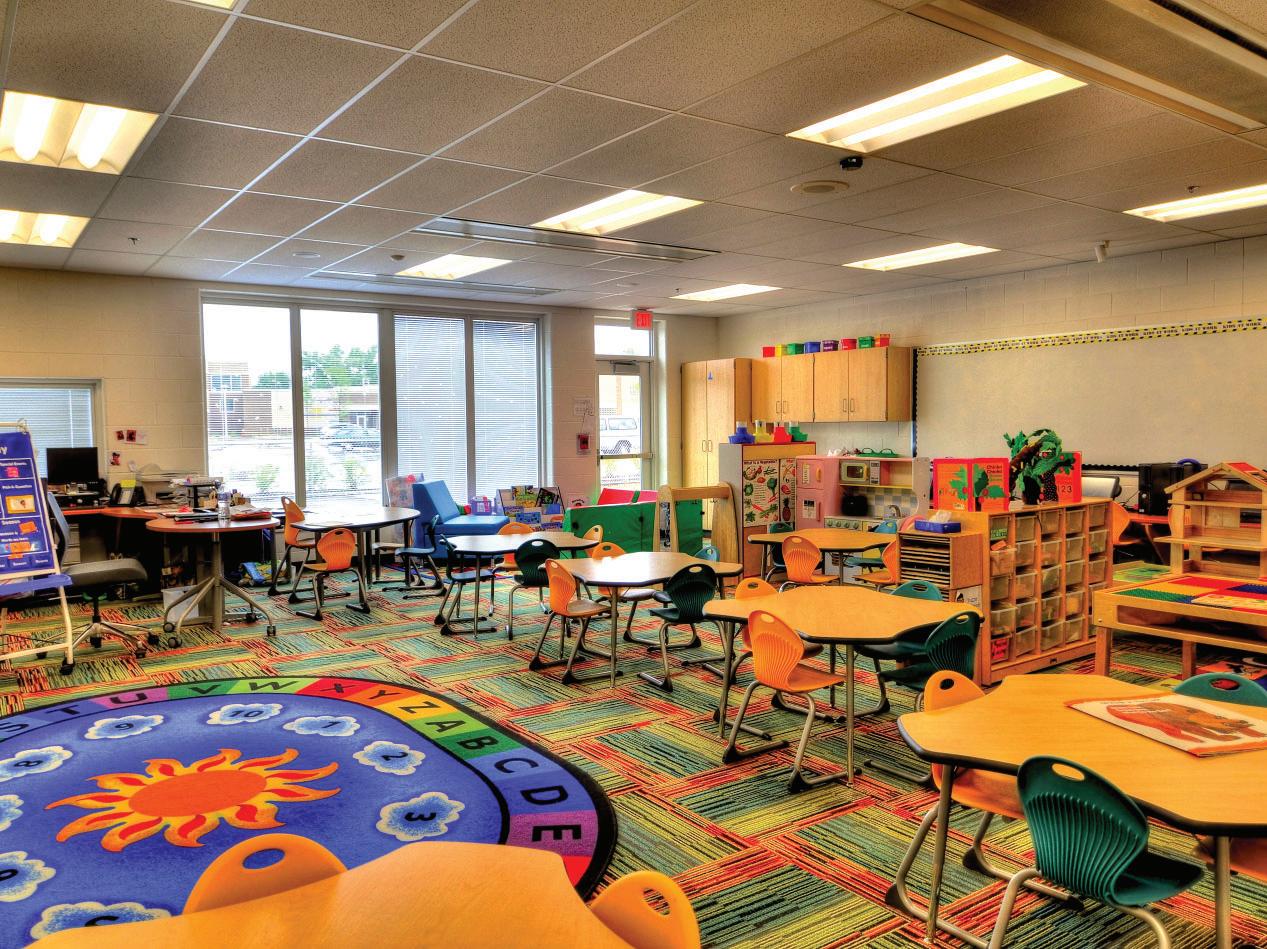
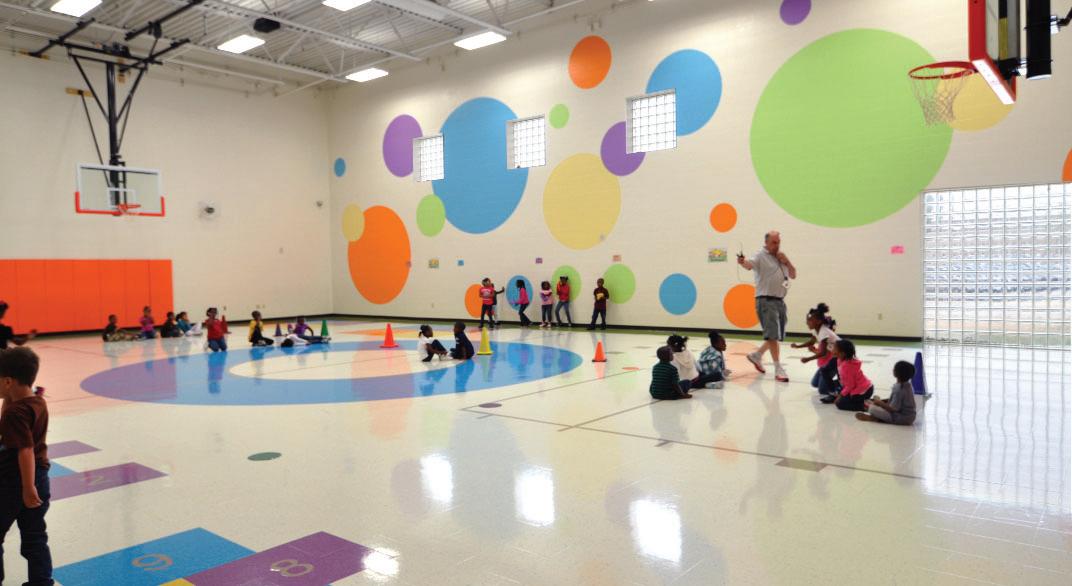
Ann Arbor, MI

The Ann Arbor Preschool and Family Center integrates a wide array of Early Childhood services for the entire district.
Programs such as Early Childhood Developmentally Delayed (ECDD), Early Intervention, First Steps, Head Start, and Michigan School Readiness Program (MSRP) are among the offerings provided by this innovative school. Other programs include therapy, community outreach, and special education services.
Design for the school playfully incorporates design strategies that tailor space to the needs of young children. The creative use of the color and materials, subtle modulation of ceiling planes and volumes create child-sized spaces. Stepped story time gathering areas and raised loft platforms allow classrooms to accommodate multiple activities simultaneously.
CLIENT Ann Arbor Public Schools
SCOPE
14,460 New SF
44,100 Renovated SF
COST
$7.2 M
COMPLETION DATE 2006
ABOVE | Classrooms feature child-sized learning spaces, including stepped gathering areas and raised loft platforms.


























by Charles Tyler, AIA, LEED-AP, and Carla Remenschneider, RID, IIDA
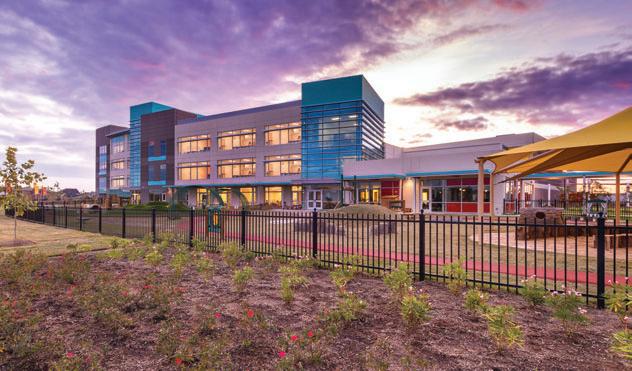
FOR HUMAN BEINGS, learning is as fundamental as life itself. From the moment we are born up through age three, our brains create 700 new neural connections each second. A quality education during early childhood is proven to have life-long benefits, academic achievement being chief among these.
But while early childhood education impacts life-long learning, the ways we learn change dramatically over time. The fact is, early childhood students are in a very different stage of development compared to their elementary school peers. And the different ways young students learn demand a very different type of learning environment — one built on the foundational elements of: Sensory Learning, Movement, Imagination, Nature and Empathy.
1 SENSORY LEARNING — In the rush to prepare children for success in kindergarten, we too often turn our preschools and early learning centers into mini elementary schools. However, simply providing smaller tables and chairs meets only a few of our youngest learners’ needs.
“From ages zero to three, children are
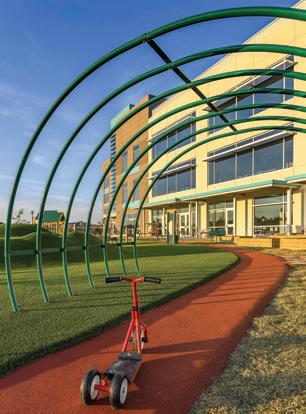

exclusively sensory learners,” says Gabriella Rowe, head of school at The Village School in Houston, Texas. “They learn through experiences like taste, smell and touch. The simple act of tasting the difference between sweet and sour food creates new pathways in the brain.”
According to Rowe, designing for sensory learning means focusing on the student experience. “Build some nooks,” she says. “Maybe it’s a little garden. Maybe it’s a science corner. Maybe it’s a simple window with a view to the outside world. Teachers will take advantage of these spaces and students will love them.”
Creativity is key when it comes to designing for the student experience. At the new West Point Elementary School, located on the West Point Military Academy in New York, early childhood spaces are designed with kitchen hubs in each neighborhood. These cozy areas are perfect for snack time, while allowing children to observe food as it is being cooked. Hard counter tops and durable flooring let students participate in food preparation, without fear of making a mess.
Sensory development in young children also has significant implications for the scale of learning environments. “Don’t put a small child in a large space,” says Rowe. “From a sensory standpoint, it is impossible for a small child to tell where the walls are in a big space. They need smaller spaces to truly understand their environment.”
Creating smaller spaces often flies in the face of limited budgets. In school construction, straight lines are less expensive; angles and curves cost more. If you are on a tight budget, consider breaking down the space through a variety of seating options or through floor patterns that create visual nooks and gathering spaces. Even these small investments make a big impact.
MOVEMENT — Movement is the second building block of a great early childhood environment. The energy shown by young students is incredible to behold. But according to research, young children aren’t just moving to move; they’re moving to learn.
“Young students need to move to develop their senses,” says Dr. Thomas Mueller, managing partner of VS America and an expert on early childhood education. “Never design an early childhood classroom to be filled with stuff. Give students space to move. Fifty percent of the room should be furnished and fifty percent should be open.”
Designing for movement takes on very different forms, depending on the curriculum and budget. At British International School of Houston in Katy, Texas, the Early Years Center classrooms are open spaces defined by a variety of learning stations and experiences. Students flow seamlessly between space for art, music, dancing, building, gathering and outdoor exploration. The flexibility of the open environment allows British School faculty to change the space to reflect the evolving educational needs of young learners.
More traditional early childhood schools include smaller classrooms with fixed walls. In these environments, movement is still possible. Rather than creating a pod with four identical classrooms, consider designing each classroom to serve a different purpose: a space to get messy, a space for life skills, and so on. Then allow students to move from space to space during the day.
Dr. Mueller stresses that movement should occur even in smaller spaces. “Children love to work on the floor,” he says. “Don’t just give students access to different learning experiences. Let them have the same experience in different ways, whether they are sitting, standing or lying on the floor.”
During planning and design, the need for movement must be balanced with curriculum requirements. Public schools are increasingly directed to focus on pre-reading and technology skills, even at the youngest ages. When addressing these mandates, create a mix of spaces. Designing for exploration and academic achievement go hand-in-hand, as long as students have space to move!
3 IMAGINATION — No one questions that imagination is an important part of a child’s early education. But too often, the physical environment is a barrier to imagination, rather than a catalyst for it.




Dr. Mueller warns against designing early childhood spaces with a lavish theme. “Children don’t want a world that is given to them,” he says. “They want to build their own world. It is more interesting for them to construct and create their own environment.”
Rowe agrees wholeheartedly with this sentiment. “Young children learn through process, not product,” she says. “Instead of providing toy castles, we want them to build their own castles. If you give a child something prefabricated, there is no process and there is no learning.”
To allow children to shape their environment, show restraint during design. The television version of a preschool room, decorated in bright primary colors and featuring lavish graphic themes, will actually limit imagination. Instead, be strategic with where color is placed, and leave plenty of blank space. Many early childhood schools opt for a neutral color scheme throughout the building. Some educators even so far as to make sure the rugs are monochromatic. The goal of design restraint is to create a canvas for student artwork. In this type of environment, the child’s work is on display, not the designer’s.
While restraint during design is a good quality, playful elements still have their place. At the new Pike Early Learning Center in Indianapolis, Ind., animalthemed wall graphics in the corridors assist with wayfinding. The graphics support the school’s emphasis on connectedness and ground children in a sense of place. A memorable animal image by the main entrance lets a child know, “This is where mom or dad picks me up each day.”
At the same time, the design for Pike Early Learning Center places a strong emphasis on student work. The walls in the school’s main corridor are purposefully left blank, except for a large tackable surface for displaying student artwork. The art will greet students each morning as they arrive at school and journey to their classrooms.
4 NATURE — Connections between indoor and outdoor spaces are critical components of early childhood education. Through creative design, young children are able to learn from nature,
no matter what their geography or climate.
Whether you are building new or renovating, make sure to prioritize outdoor space. Playgrounds offer a variety of opportunities for sensory learning and the development of large motor skills. Make your playground multi-faceted and offer space for rolling down hills, digging in the sand, riding tricycles, exploring nature or taking care of plants or animals.
When designing for indoor and outdoor connections, it is important to clarify expectations for student movement. Will children be able to move spontaneously from space to space? Should doors leading to secure play areas have latches? Answering these questions will allow designers to maximize learning opportunities while meeting expectations for security and oversight.
When outdoor learning is not possible, consider bringing nature inside. British International School of Houston has large wooden trees in the corridors just outside the Early Years Center. The trees provide an exciting place for students to gather on the rare days they cannot venture outdoors. Other design opportunities include the use of natural materials in furniture and furnishings. “In our digital world, so much of what a child experiences is plastic or metal,” says Dr. Mueller. “Young students love to feel wood and stone — materials that connect them to the authentic world.”
5 EMPATHY — Empathy is the final building block of early childhood design, and it is the most important factor of all. Clair Wain, director of Early Years education for British International School of Houston, recommends starting the design process by clarifying your beliefs about children and about childhood.
“Each choice springs from a different understanding of a child’s place in the classroom and the teacher’s role,” she says. “I would suggest that the first step in designing a new space for young children is to consider:
• Who is a child?
• How do we learn?
• What is childhood?
• How do children learn?
• What is the meaning of education?
Once you are clear in your beliefs about children, then you will be able to design your space in accordance with your school community’s values.”
Wain also recommends close collaboration between designers and the teachers who will work in the space. Teachers are especially helpful, she says, in discussing practicalities such as the height of sinks and the number and placement of toilets.
Collaboration between educators and designers has always resulted in optimal spaces for learning, but there are also exciting lessons to be learned from other building types. The GAP Kids® stores with their separate doors for adults and children are an excellent example of child-centered design. Giving young students an entrance all their own says, “this is a place for you.” Children’s museums, with their emphasis on exploration and discovery, are another source of inspiration.
— Advocates for high-quality early childhood education point to improved test scores, among other benefits. Yet while better performance on tests is a worthy goal, it should not be the sole criteria for evaluating the effectiveness of early childhood environments. Designing for sensory learning, movement, imagination, nature and empathy leads to facilities focused on a broader view of the learning experience for each child.
In fact, Wain suggests evaluating your space from a unique perspective. She asks, “In your current school or future school, how would you respond to a child who wonders:
• Do I belong here?
• Do you know me?
• Is this place safe for me?
• Will you let me fly?”
The answers to these questions are the true measure of exceptional early childhood facilities. SPM
>> Charles “Chuck” Tyler, AIA, LEED-AP, ctyler@fhai.com, is a principal and project executive in the Indianapolis, Ind. office of Fanning Howey, a national leader in the planning and design of learning environments. Carla Remenschneider, RID, IIDA, cremenschneider@fhai.com, is director of Interior Design and a principal with Fanning Howey.

